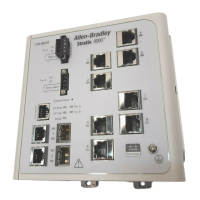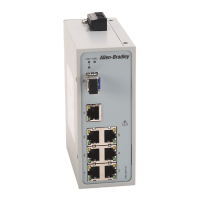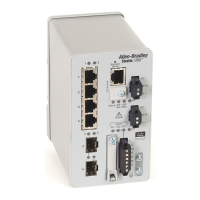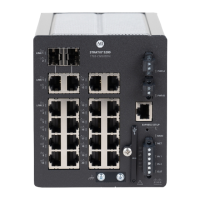40 Rockwell Automation Publication 1783-UM003G-EN-P - December 2012
Chapter 2 Switch Software Features
You can construct almost any type of network based on REP segments. REP also
supports VLAN load-balancing, controlled by the primary edge port but
occurring at any port in the segment.
These types of REP ports are selectable in the Device Manager Web interface:
• Primary: This port is a primary edge port. This port always participates in
VLAN load balancing in the REP segment.
• Edge: This port is a secondary edge port. It also participates in VLAN load
balancing in the REP segment.
Edge ports are termination points of a REP segment. The user must
configure two edge ports, including one primary edge port, for each REP
segment. Entering edge without primary configures the port as a secondary
edge port. Primary and secondary edge ports must be configured even if
support of VLAN balancing is not required.
• Transit: This port is a non-edge port in the REP segment.
• No-Neighbor Primary: This port is a primary edge port connected a non-
REP switch.
• No-Neighbor: This port is a secondary edge port connected to a non-REP
switch.
The no-neighbor edge ports contain all properties of regular edge ports.
These ports allow construction of a REP ring containing a switch that does
not support REP protocol.
• None: This port is not part of the REP segment.
REP and STP can coexist on the same switch, but not on the same port. REP
does not interact with STP. For example, if a port is configured as a REP port,
STP is disabled on that port. STP bridge protocol data units (BPDUs) are not
accepted on or sent from segment ports REP ports. However, adjacent REP and
STP rings or domains can share a common link. This common link can be used
for passing REP and STP date plane traffic, or for the STP control plane traffic.
The following figure shows an example of a segment consisting of six ports spread
across four switches. Ports E1 and E2 are configured as edge ports. When all ports
are operational (as in the segment on the left), a single port is blocked, shown by
the diagonal line. When there is a failure in the network, as shown in the diagram
on the right, the blocked port returns to the forwarding state to minimize
network disruption.

